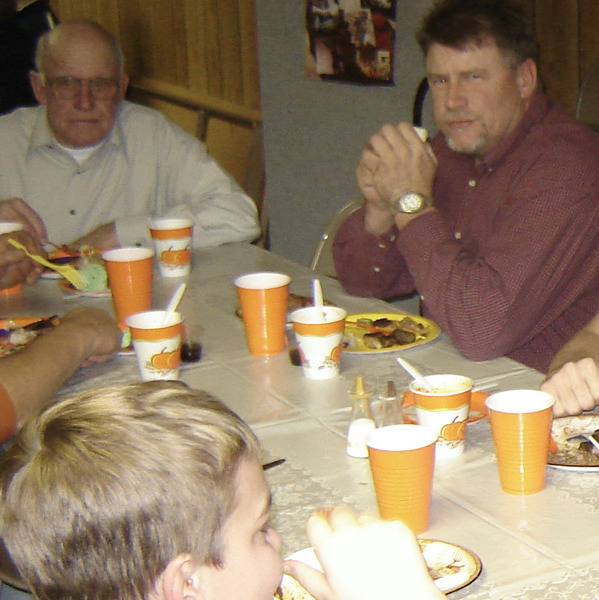For many Dutch-American Midwesterners, the ham bun is more than simple nourishment served at gatherings of the Christian Reformed Church. It’s certainly more than the sum of its parts: ham and a pat of butter on a bun, wrapped in foil, and stacked in pyramids a half-dozen sandwiches high. (Fancy versions come with cheese, or with mustard, onion, and poppy seed sauce.) It typically follows a heavy dose of Calvinist theology, delivered by the spiritual—and literal—descendants of the immigrant families who founded the Christian Reformed Church in Holland, Michigan, in 1857.
Among those who have left the church and its culture behind, the mere mention of ham buns may conjure laughter, mild embarrassment, and even outright revulsion. That distaste is often culinary, provoked by memories of chewing and swallowing tepid cured pork on a yeasty roll with butter and room temperature cheese. It may also come from the association with a stern and judgmental congregation and its doctrine of total depravity, unconditional election, limited atonement, irresistible grace, and the perseverance of the saints.
Among those who have left the church and its culture behind, the mere mention of ham buns may conjure laughter, mild embarrassment, and even outright revulsion.
So ubiquitous are ham buns in Christian Reformed tradition that non-Dutch neighbors associate the sandwich exclusively with the Netherlands. But is it even Dutch? I’ve never been able to determine if the sandwich originated in Europe or if it is a product of immigration and Americanization.
Etymology isn’t very helpful. The Dutch call a range of toasts and open-faced sandwiches boterham, offering a precedent for the pairing of bread, butter, and ham—though ham, in that case, may have originally referred to a broader variety of meats than the ham Michiganders buy at Meijer. But then, with their three simple ingredients, ham buns fit neatly into a heartland tradition of “ham buddies,” “party sandwiches,” “funeral sandwiches” and “sliders.” (Although ham buns, of course, would never include something as decadent as a brown sugar glaze.) Still, it’s hard to believe that a denomination that prides itself in being “in the would but not of it” would have imported its dearest and most peculiar food tradition from its secular neighbors. For now, I contend that Midwestern ham buns are distinctively Dutch-American.
The ham bun is certainly an expression of group identity for members of the Christian Reformed Church. It’s the ultimate comfort food for congregants, giving them one last taste of grace before they re-enter the sinful world beyond the church doors. Its role in fellowship makes it more than just a ham sandwich. On youth group camping trips, we didn’t choose between dogs and burgers, but between ham buns with cheese or without. I recently heard a story about a friend of a friend who started a catering business in Grand Rapids—the home of church headquarters and the “Holy City” for many Midwestern Dutch. The top question from potential clients: Can you make ham buns?




